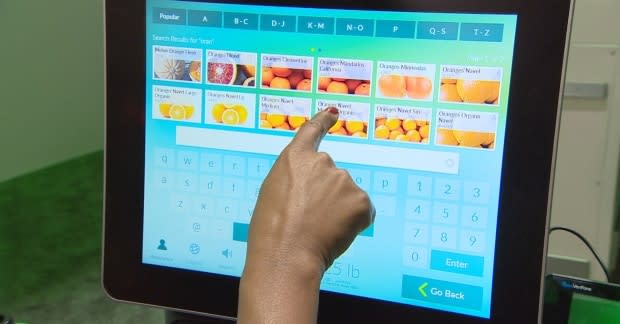A crime of opportunity: Why certain shoppers steal at self-checkout
Self-checkout theft is an acknowledged problem, but what's less talked about is who's committing the crime.
Turns out, it may be someone you know — even you.
Perhaps an item you tried to scan didn't have a barcode, so — pressed for time — you slipped it into your bag without paying, instead of flagging down a store employee for assistance.
You felt justified given the circumstances and figured the risk of getting caught was low. U.K. criminologist Adrian Beck calls this a crime of opportunity, one that's turning average shoppers into "part-time thieves."
"These aren't people who are setting out in the day going, 'You know what, I'm now going to go and steal some items from retailers,'" he said. "They're just taking the opportunity that they are presented with at these machines."
From 2016 to 2018, Beck studied retail sales losses caused by self-checkout theft and honest mistakes made by customers scanning their own items. The emeritus professor at the University of Leicester said it's hard to differentiate between the two acts, because a customer's intent is unknown.

Beck's research included interviewing and gathering data from 13 major U.K. and U.S. retailers such as Walmart and Target. Based on his findings, he estimates a large retailer with half its transactions being processed through self-checkout can expect added losses in the millions of dollars.
CBC News asked several large Canadian retailers for comment. Only Loblaws reponded, stating that it has implemented effective security measures and doesn't see a difference in theft rates when customers use self-checkout rather than going through a cashier.
The Retail Council of Canada said it doesn't have specific data on self-checkout theft, but believes the problem is small compared to the more calculated crime of shoplifters concealing items and exiting.
But Beck warns self-checkout theft could grow as retailers add machines to save labour costs, and unscrupulous shoppers become more savvy.
"That is a concern, that the public becomes familiarized and more comfortable with ways in which the systems can be used and abused."
'I get to take 1 or 2 things for free'
So what inspires shoppers to steal at self-checkout? They're lured by the promise of anonymity, said Barbara Staib, spokesperson for the National Association for Shoplifting Prevention in the U.S.
The association surveys thousands of small-time shoplifting offenders each year, and has found that many view self-checkout as easy prey because few staff are present.
"If I think nobody's watching me and nobody's seeing what I'm doing, I'm far more likely to misbehave," said Staib. "That's just human nature."
Industry experts say self-checkout thieves also rationalize their bad behaviour — perhaps by blaming their theft on machine glitches or on the fact that the store only has self-checkout stations open at that time.
"'Now I've got to bag my own stuff and I've got to check out myself … and it's a little bit of a hassle, so, guess what, I get to take one or two things for free,' that's the mentality," said Bob Moraca, vice-president of loss prevention at National Retail Federation in the U.S.
And if they get caught, self-checkout thieves know they may be able to get away with it by claiming ignorance.
"You say, 'Oh, goodness me, did I make a mistake? I'm terribly sorry,'" said Beck.
The carrot trick and other scams
Beck's research pinpointed several tricks thieves use, including simply not scanning some items.
Another scam: customers choose a code on the machine for a much cheaper item, such as carrots, when scanning pricey products without barcodes.
"If I put through grapes as carrots, how would you ever know?" said Beck.
Another trick is switching barcodes when scanning items. Beck said one method — which involves some pre-planning — is to take a photo of a cheaper item's barcode, print it and then stick it over the barcode of pricier items when scanning them at self-checkout.

Last week, police in Medicine Hat, Alta., charged a man with fraud after he allegedly stole more than $30,000 worth of pricey DVD box sets and action figures at several big box stores in Saskatchewan and Alberta.
The man allegedly committed the crime by changing the barcode on each item and scanning them at self-checkout, so a $140 DVD box set only cost him a few bucks. Police wouldn't reveal precisely how he did it.
The alleged scam ended after an employee at a Medicine Hat store discovered something odd.
"The store employees noticed, as he's going through the self-checkout, that the items that he was ringing up were fairly expensive items but, repeatedly, this $5 price tag kept coming up," said Medicine Hat police Staff Sgt. Cory Both.

Shopping for solutions
Shoplifting costs retailers and potentially customers, who may see a store's losses reflected in higher prices.
One way to combat such theft is to have more employees monitoring the self-checkout area, said Staib.
"Just knowing what we know about offenders, more attendance probably would be valuable."
Beck said new technologies can also help, such as video systems which detect the item being scanned so it cannot be misrepresented.
"Your part-time thieves, they're very easily nursed back to honesty because they definitely don't want to get caught and be embarrassed by this."

